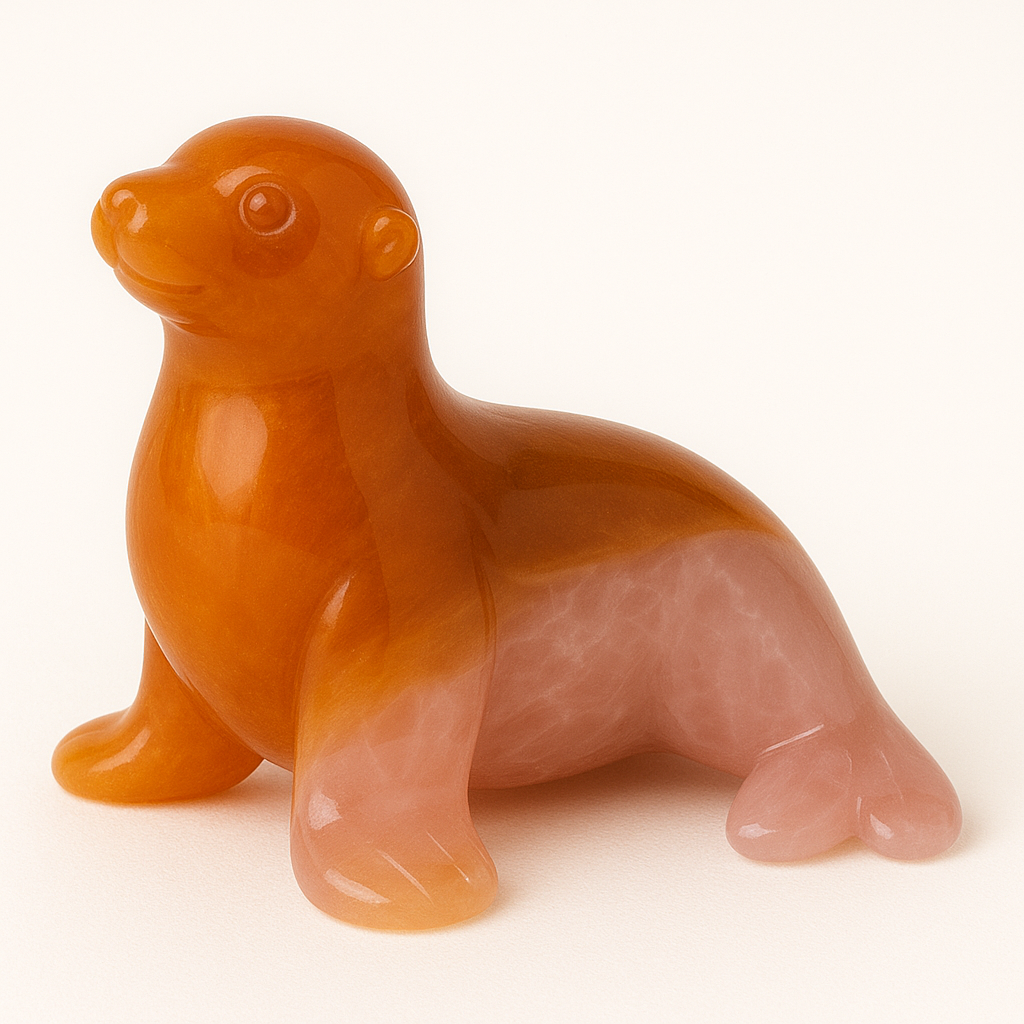
The Symbolism of Seals
Share
Sleek-bodied and spirit-rich, the seal is a creature of dual realms—dwelling in the vast oceanic unconscious yet surfacing often to rest beneath the sun. It plays among waves not in resistance, but in complete surrender to flow. The seal is an emblem of emotional adaptability, joyful embodiment, and the mystery of the self who lives both beneath and above the surface of awareness.
To contemplate the seal is to witness fluid grace, sensual curiosity, and the soul’s desire to move freely between feeling and form.
The Ocean’s Companion in Cultural Memory
Among the Celtic peoples, the seal is revered through the myth of the selkie—a being who shifts between seal and human, embodying the deep longing for both spiritual freedom and earthly connection. The selkie is not trapped in either world but is called by both. It symbolizes the yearning for wholeness, for the integration of the emotional depths with the surface self.
In Inuit traditions, seals are central to survival—not just physically, but spiritually. They are honored as givers of life, approached with reverence and ceremony. To the Inuit, the seal represents reciprocity, communion with the sea, and the understanding that nourishment must be honored through humility.
Across many coastal cultures, seals are seen as playful messengers, appearing with innocence yet cloaked in mystery. They emerge suddenly, disappear without warning, and move always in harmony with the rhythms of water and breath.
Fluidity, Breath, and Play Between Worlds
The seal breathes air, yet lives beneath the sea. It holds its breath for long stretches, diving into unseen realms, then returns to the surface with ease. This natural rhythm mirrors the soul’s movement between conscious awareness and emotional depth, teaching that neither realm must be feared or fixated upon.
Its body is smooth, its movements playful. It slides across land awkwardly but swims with elegance, revealing that our full grace is often found in the element of our deepest origin. On earth, the seal adapts. In water, it thrives.
Its play is not wasted energy—it is healing through movement, presence through spontaneity, and a reminder that joy and emotion are not separate energies, but expressions of the same sacred current.
The seal teaches that to feel deeply is not to sink, but to swim, and that the surface and the deep are not enemies—they are one whole ocean of being.
Resonance with the Energy Centers
The seal resonates primarily with the orange-ray energy center—the sacral chakra, which governs emotional flow, pleasure, relationship, sensuality, and movement through contrast.
Its entire nature is orange-ray: emotional, relational, instinctively aware of the energies of others, yet unburdened by guilt or rigidity. The seal expresses freedom through form, and connection through play, embodying the wisdom that joy and feeling are not distractions from the path—they are part of the path.
There is also a secondary resonance with the green-ray energy center—the heart chakra, which governs compassion, openness, and unconditional inclusion.
Seals are social beings, often seen in groups, huddled close in sun-warmed clusters or playfully weaving through the tides together. They reflect a heart-based existence: one that includes others instinctively, shares space generously, and moves in unison without hierarchy.
Together, orange and green ripple through the seal as:
emotion in motion,
love expressed through play,
and depth explored without fear.
The One Who Dives with Joy
To walk—or swim—with the seal is to learn how to feel without drowning, to love without grasping, and to play without apology. The seal invites the seeker to trust the tides, to embrace feeling as movement, and to allow joy to be a sacred current, not a distraction from seriousness.
The seal does not analyze.
It flows.
It does not resist.
It delights.
It teaches:
Go deep, but rise often.
Feel fully, but love lightly.
And remember—the wave is not separate from the sea.